18 Stunning Blue Flowers to Brighten Up Your Landscape
Blue flowers can bring a serene and vibrant touch to any landscape. With their cool tones, they create a calming atmosphere while adding a pop of color. Whether you have a small garden or a spacious yard, blue flowers are versatile enough to fit into various garden designs. From delicate blooms to bold, towering spikes, there is a wide variety to choose from. These flowers can thrive in different climates and soil types, making them a great addition to any garden. Their beauty is not only pleasing to the eye but also attracts pollinators like bees and butterflies.
This post may contain affiliate links, which helps keep this content free. Please read our disclosure for more info.
Delphinium
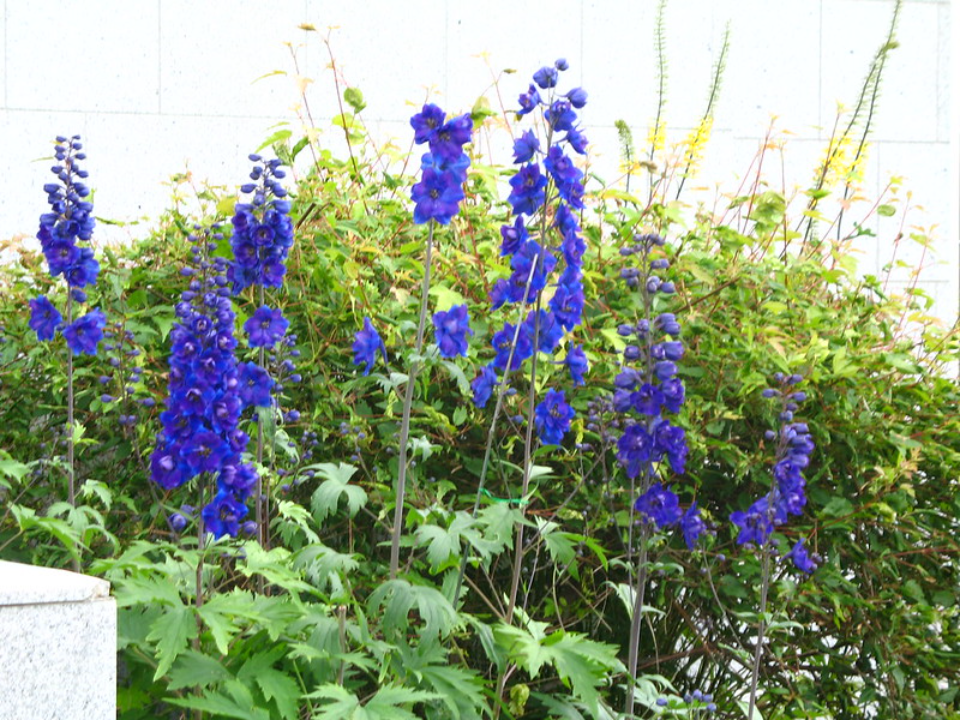
Delphiniums are known for their tall spires of vibrant blue flowers that create a stunning focal point in any garden. These flowers thrive in full sun and prefer well-drained soil, making them ideal for border planting or as statement pieces.
The blue blossoms, which range from soft pastels to rich, deep hues, attract pollinators such as bees and butterflies. They are perfect for adding vertical interest to your landscape and work well in cottage gardens or as part of a mixed border.
Bluebell
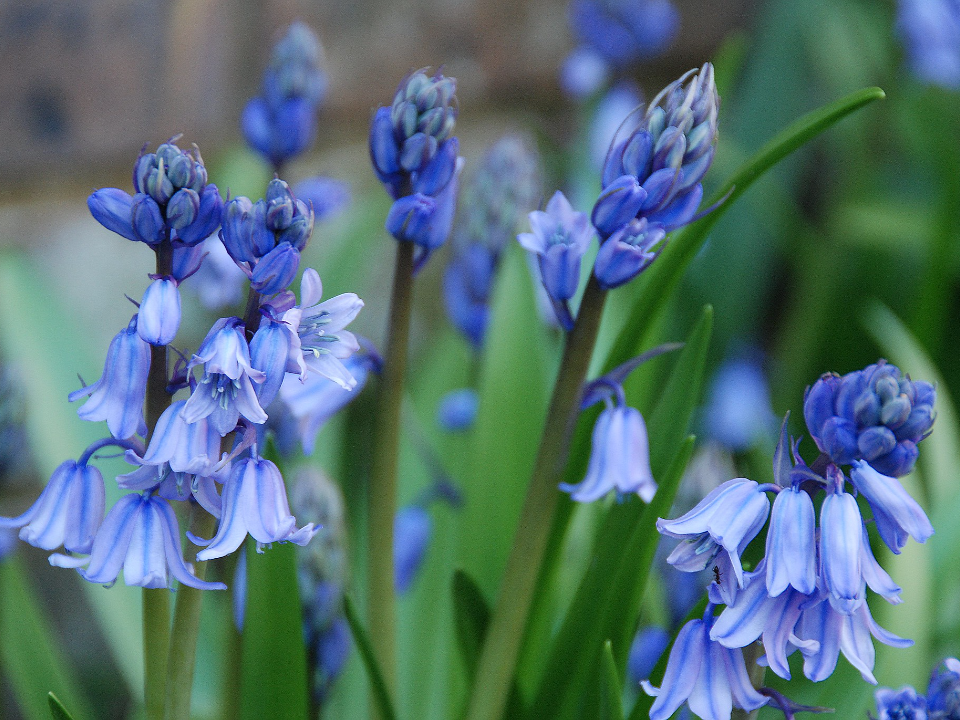
Bluebells are a classic spring flower with delicate bell-shaped blooms that form clusters in shades of blue and violet. These flowers grow best in shaded areas with moist, well-drained soil, making them great for woodland or shaded garden beds.
Their sweet fragrance and soft, nodding flowers add an enchanting touch to any garden. Bluebells are also well-known for spreading naturally, creating lovely drifts of color that will return year after year.
Hydrangea
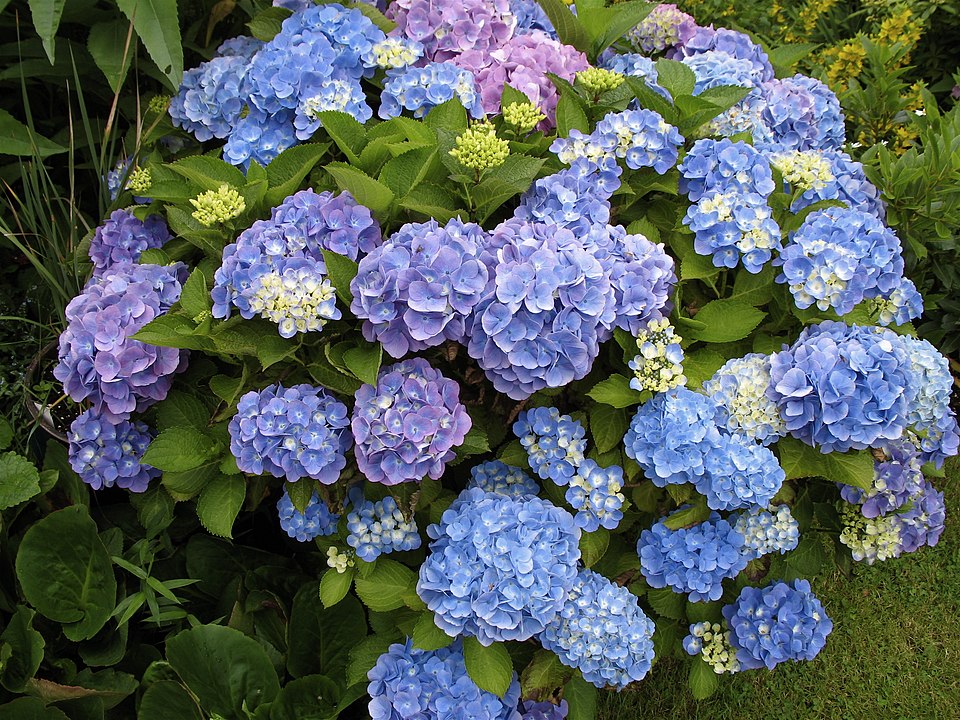
Hydrangeas are celebrated for their large, globe-like clusters of flowers that come in a variety of colors, with blue being one of the most sought-after hues. The pH of the soil will influence the intensity of the blue color, making them an adaptable option for gardeners who want to experiment with shades.
These flowers bloom in mid to late summer and provide a rich, full look in gardens. Hydrangeas are perfect for adding a burst of color in shady spots, and their long-lasting blooms continue to delight throughout the season.
Lobelia
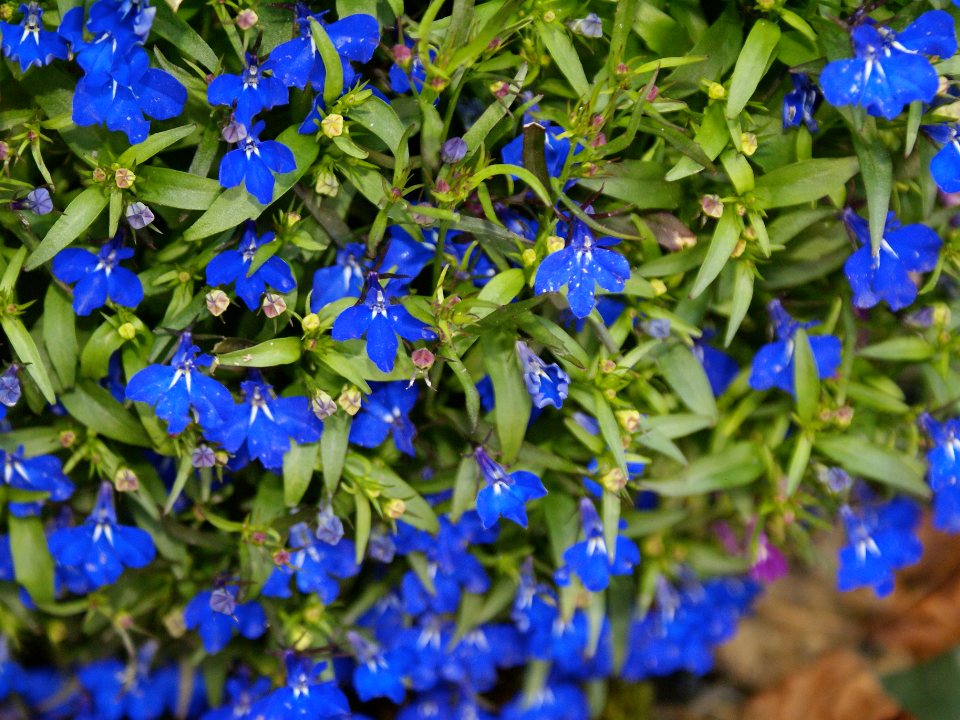
Lobelia offers a profusion of blue flowers that create a striking contrast in hanging baskets or as edging in garden beds. These flowers thrive in full sun to partial shade and prefer moist, well-drained soil, making them perfect for containers or window boxes.
Their compact growth and vibrant blue color make them an excellent choice for brightening up any space, especially in the spring and summer months. Lobelia also attracts hummingbirds and butterflies, adding both beauty and movement to your garden.
Bachelor’s Button
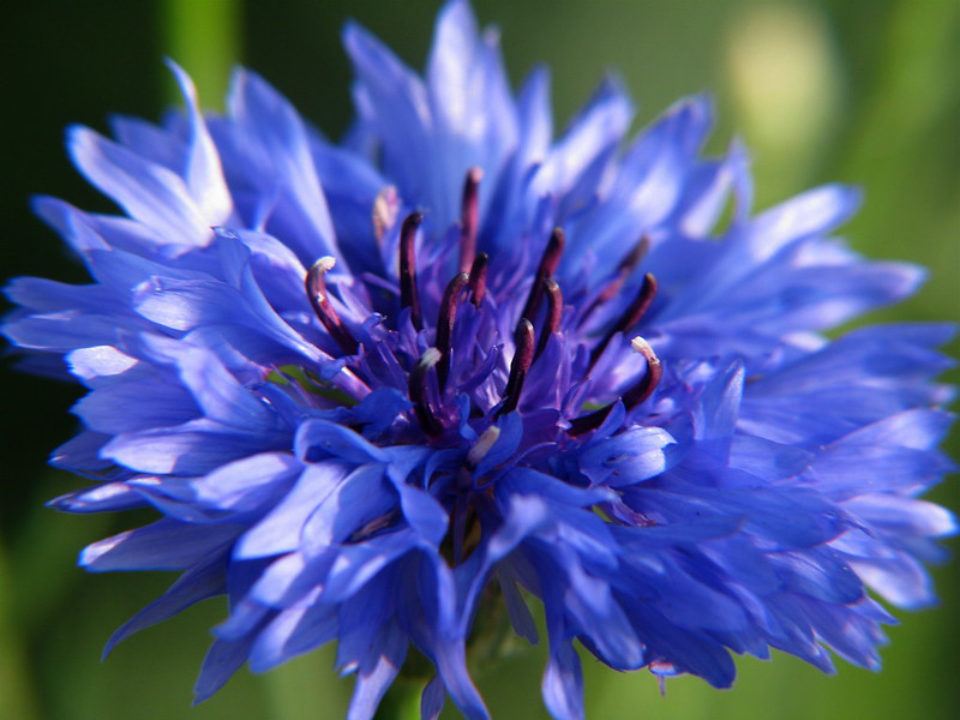
Bachelor’s Buttons, also known as cornflowers, have a charming, wildflower-like appearance with bright blue petals. These plants are drought-tolerant and easy to grow in well-drained soil, making them perfect for low-maintenance garden settings.
Their blue blooms, which appear throughout the summer, bring a cheerful vibe to meadows or naturalized gardens. Bachelor’s Buttons are also excellent for attracting pollinators, making them a practical and beautiful addition to any landscape.
Morning Glory
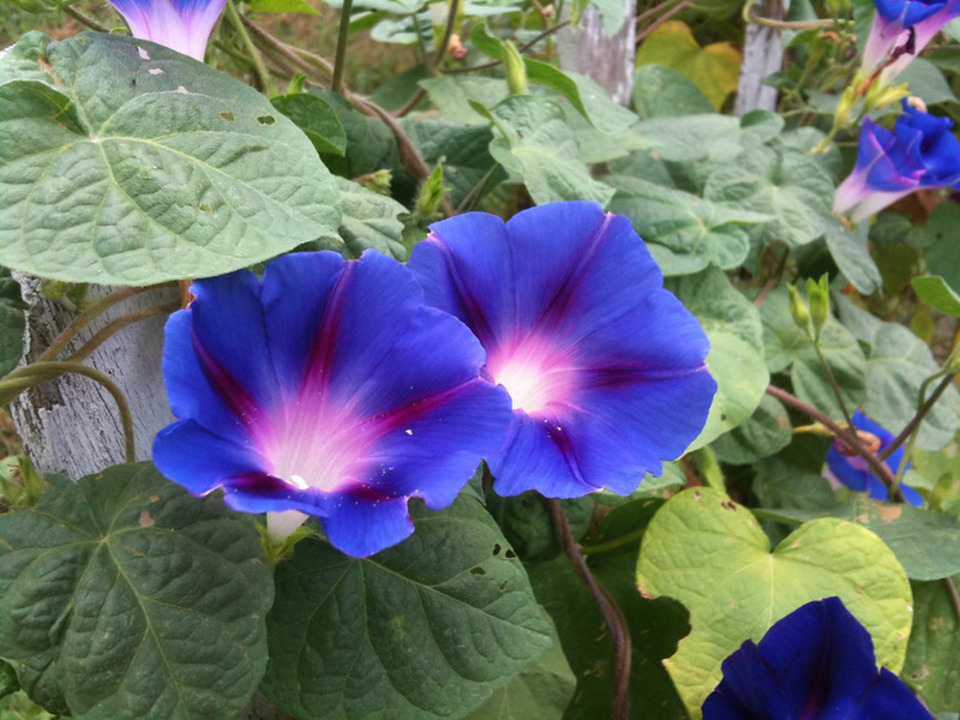
Morning Glories are climbing vines with vibrant blue flowers that open in the early morning, adding a touch of elegance to any trellis, fence, or pergola. They grow quickly and love full sun, reaching their peak beauty in late summer.
These flowers are known for their trumpet shape, and their rich blue hue makes them stand out in any garden. Morning Glories also have heart-shaped leaves, adding a charming texture to the overall appearance of your garden.
Virginia Bluebell
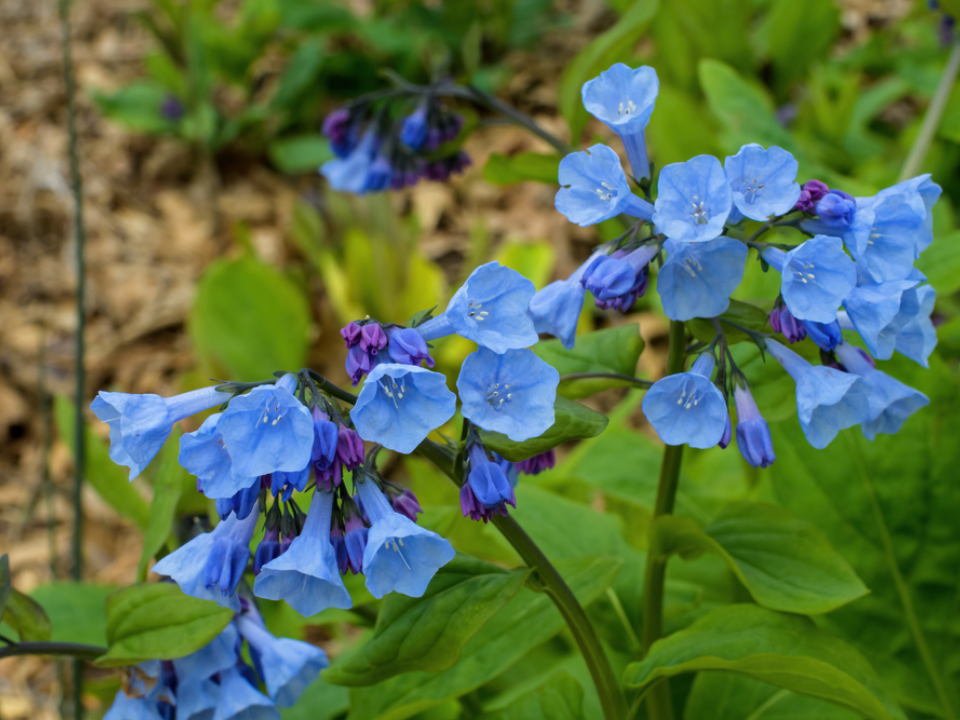
Virginia Bluebells are spring-blooming perennials with soft, bell-shaped blue flowers that create a calming and peaceful atmosphere in your garden. These plants thrive in partial shade and moist, well-drained soil, making them ideal for woodland gardens or shaded flower beds.
Their blooms emerge in early spring and gradually fade as the season progresses, leaving behind attractive green foliage. Virginia Bluebells are a lovely choice for adding seasonal interest and a pop of color to your landscape.
Forget-Me-Not
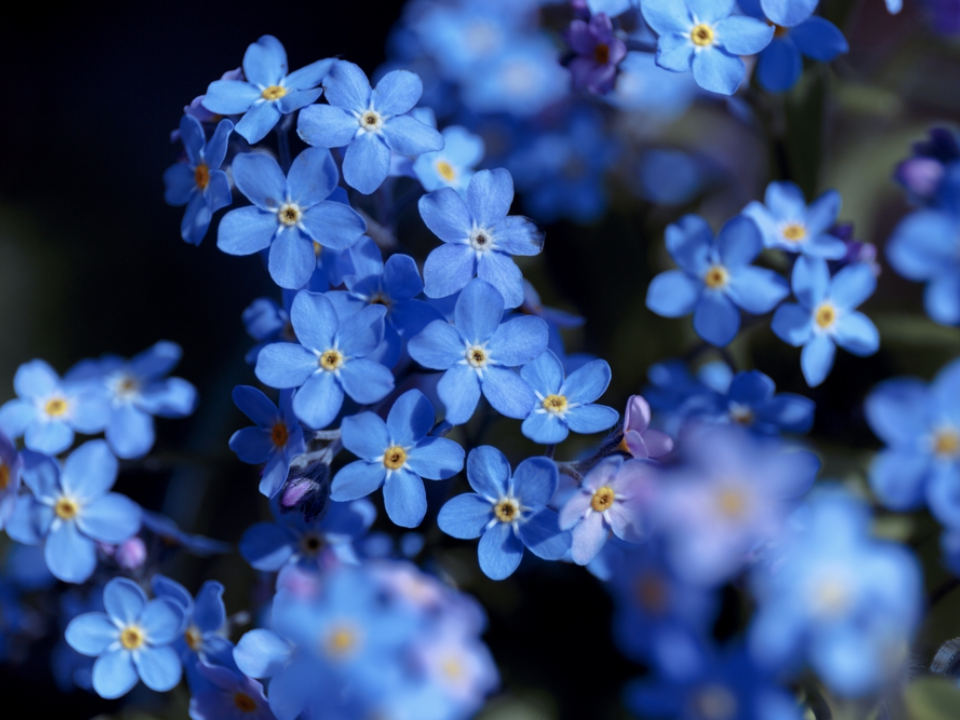
Forget-Me-Nots are small but charming flowers that bloom in clusters of pale to deep blue. These plants are perfect for growing in cool, moist conditions, and they thrive in partially shaded or sunny areas.
They are especially popular in spring gardens, where their delicate blooms create a sweet, nostalgic look. Forget-Me-Nots are ideal for edging flower beds or filling in gaps between other plants, offering a soft touch of blue throughout the growing season.
Agapanthus
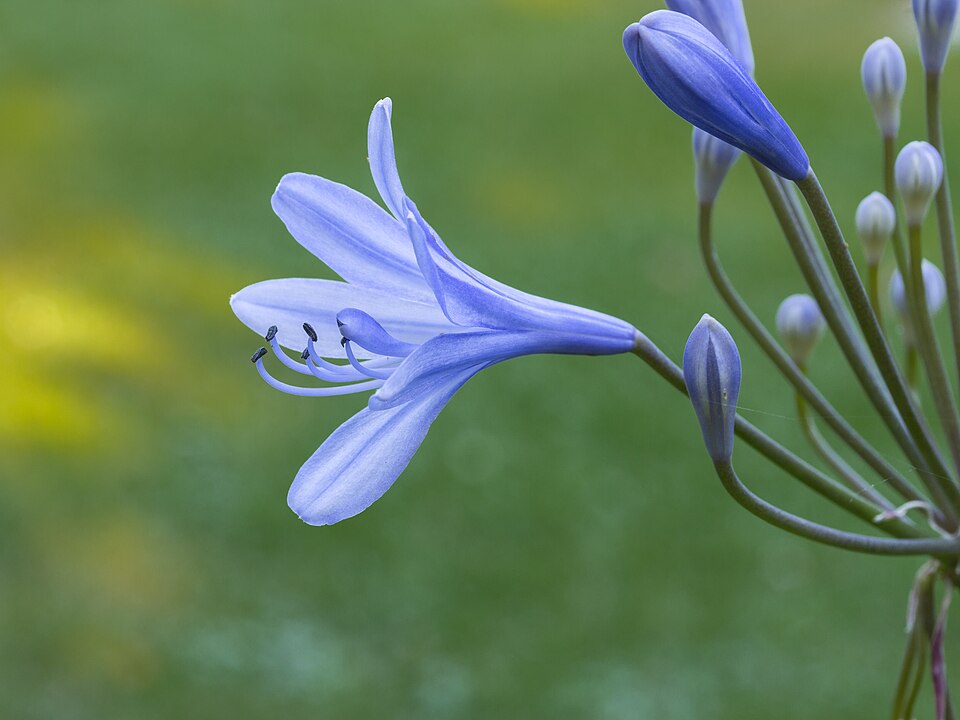
Agapanthus, often known as African Lily, produces clusters of blue flowers on tall stems, making them a great option for adding vertical interest to your landscape. These flowers thrive in sunny spots with well-drained soil, making them perfect for containers, garden beds, or as focal points.
Their vibrant blue or purple hues attract bees and butterflies, creating a lively and colorful atmosphere in the garden. Agapanthus are also known for their long-lasting blooms, which can continue throughout the summer.
Plumbago
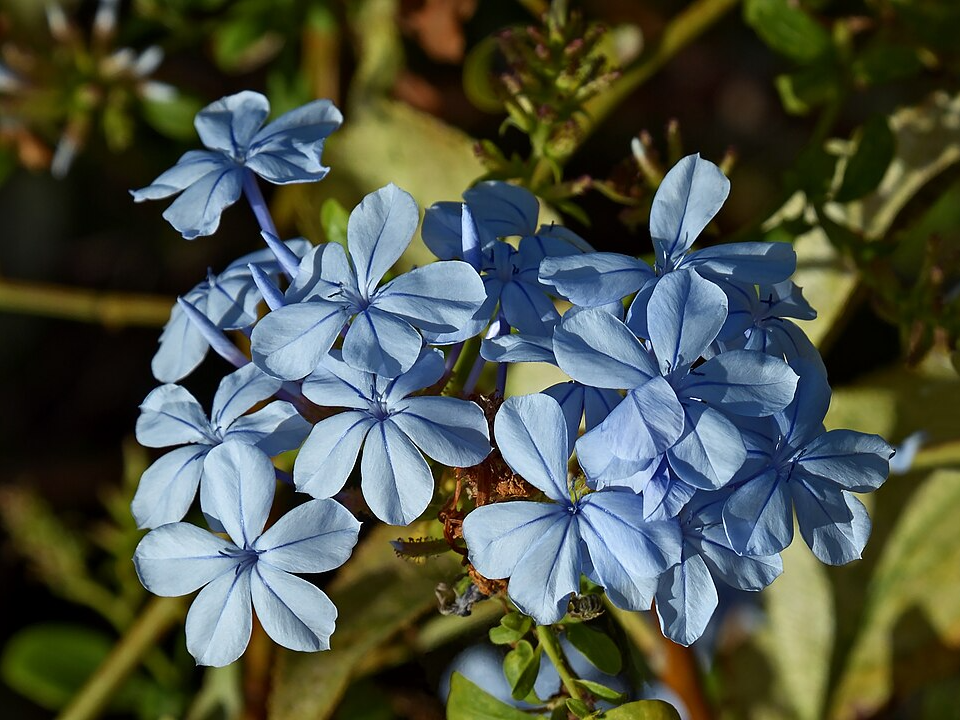
Plumbago, also known as Cape Plumbago, offers clusters of bright blue flowers that bloom throughout the summer and fall. This shrub thrives in full sun to partial shade and prefers well-drained soil, making it suitable for containers, garden beds, or as a hedge.
The plant’s cascading clusters of blue flowers add a soft, airy look to the landscape, and its evergreen nature provides year-round interest. Plumbago is a great option for adding a tropical feel to your garden while maintaining low maintenance.
Salvia
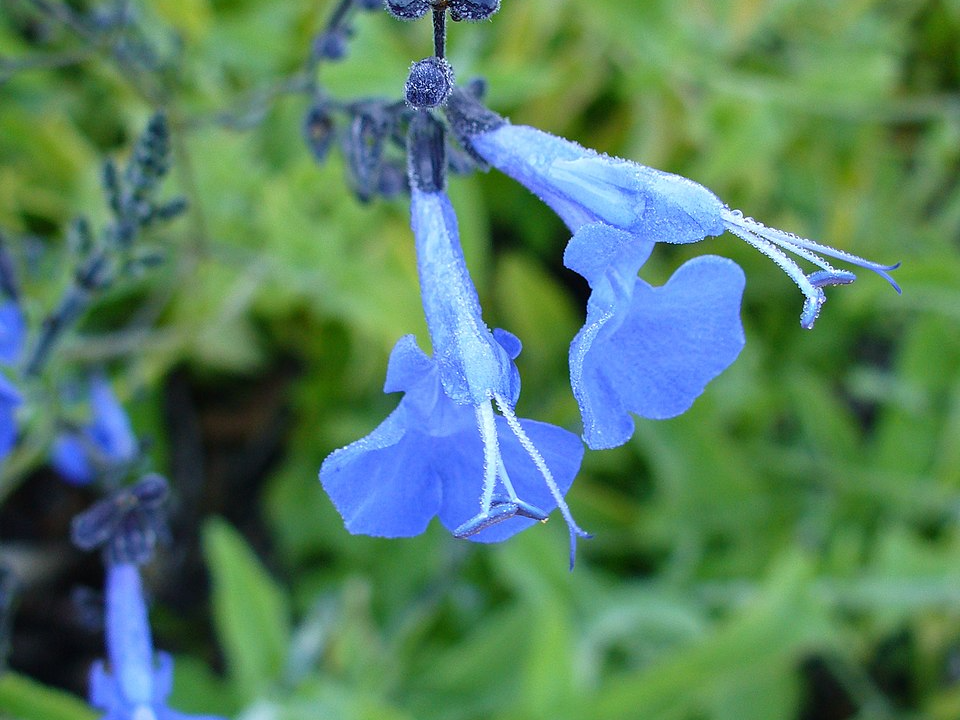
Salvia produces a range of blue flowers with tall spikes that bring color and texture to any garden. These plants thrive in full sun and are drought-tolerant once established, making them perfect for low-maintenance landscapes or xeriscaping.
Salvia’s vibrant blue spikes can be used to complement other plants, and its flowers attract pollinators such as bees, butterflies, and hummingbirds. It is ideal for growing in garden beds, borders, or even containers.
Cichorium (Chicory)
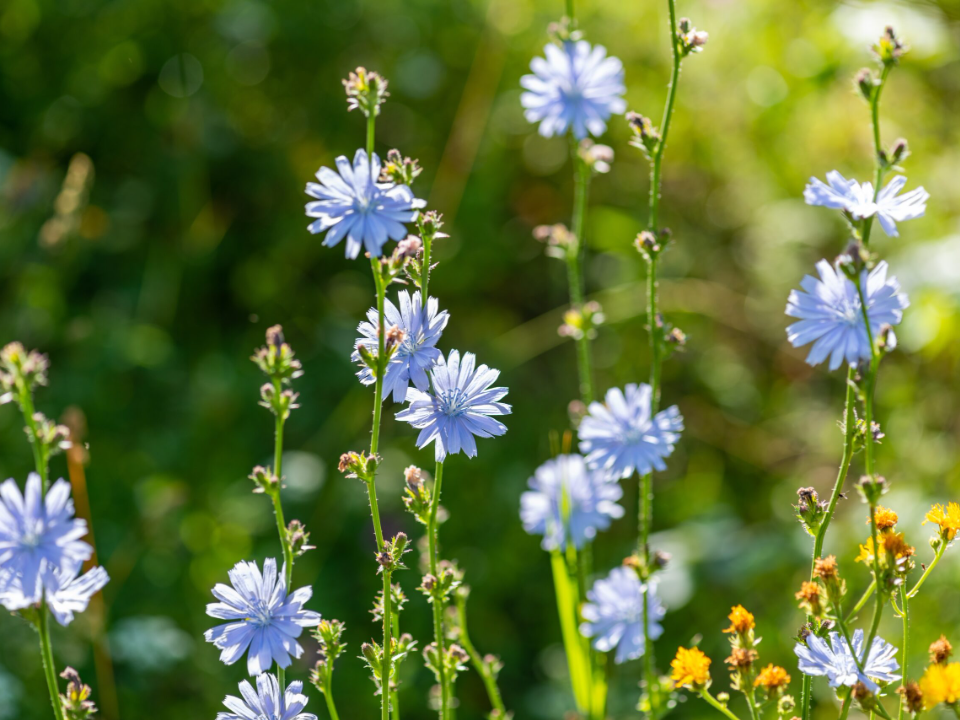
Chicory, known for its striking blue flowers, grows as a hardy, perennial herb. The flowers appear during the summer months and are perfect for wildflower gardens or as part of a naturalistic landscape.
Chicory plants prefer full sun and well-drained soil, thriving in both wild and cultivated settings. Their vivid blue blooms are simple yet elegant, attracting bees and other pollinators to your garden.
Gentian
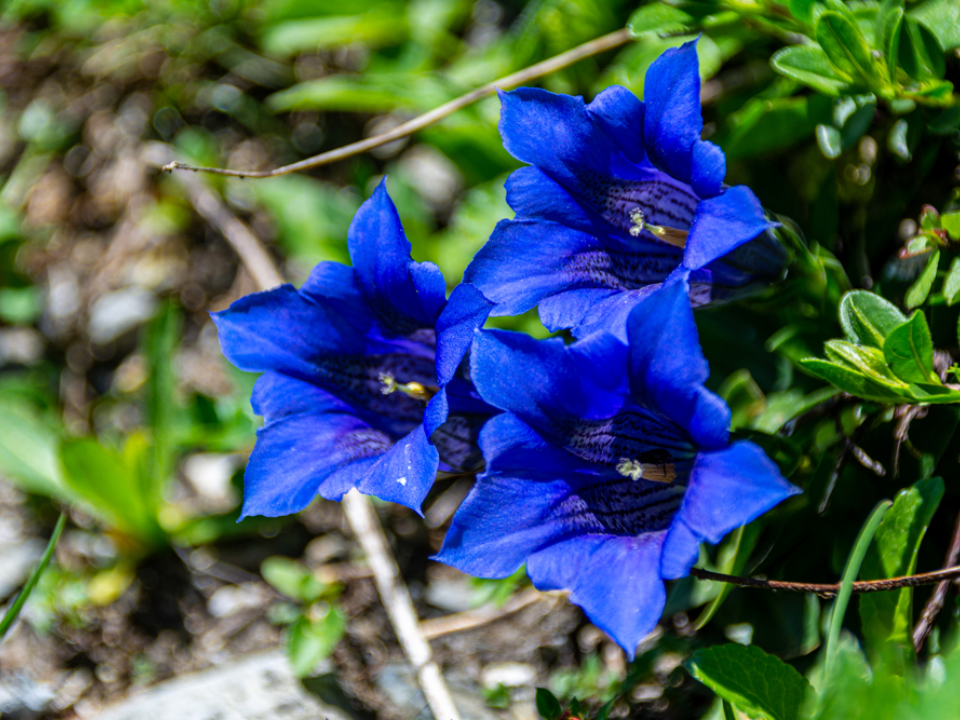
Gentian is a lesser-known plant that offers deep, rich blue flowers with a trumpet-like shape. These plants thrive in moist, well-drained soil and are often found in mountainous regions, making them ideal for cool, temperate gardens.
Their bright blue flowers, which bloom in late summer or early autumn, provide a striking contrast to other plants in your garden. Gentians are perfect for adding an unexpected splash of blue to shaded areas.
Anemone
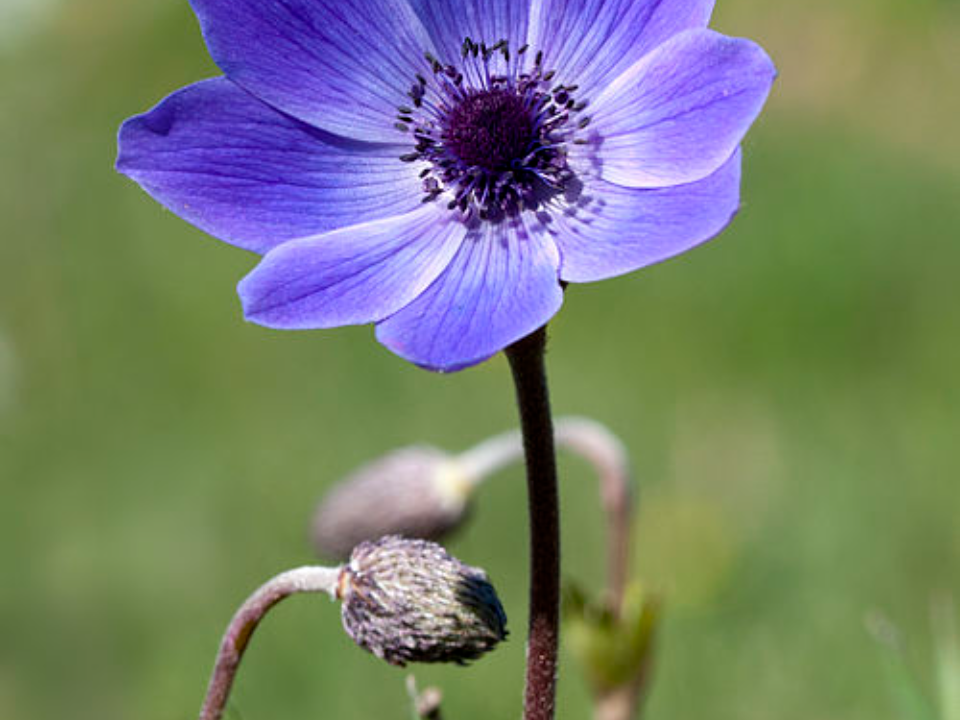
Anemones, known for their bold blue blooms, add elegance and color to any garden. They are best suited to partial shade and moist, well-drained soil, making them a good choice for woodland or shaded garden beds.
These plants are often the first to bloom in the spring and continue through the summer. Anemones are versatile in a garden setting, providing both beauty and interest with their delicate yet vibrant blue flowers.
Iris
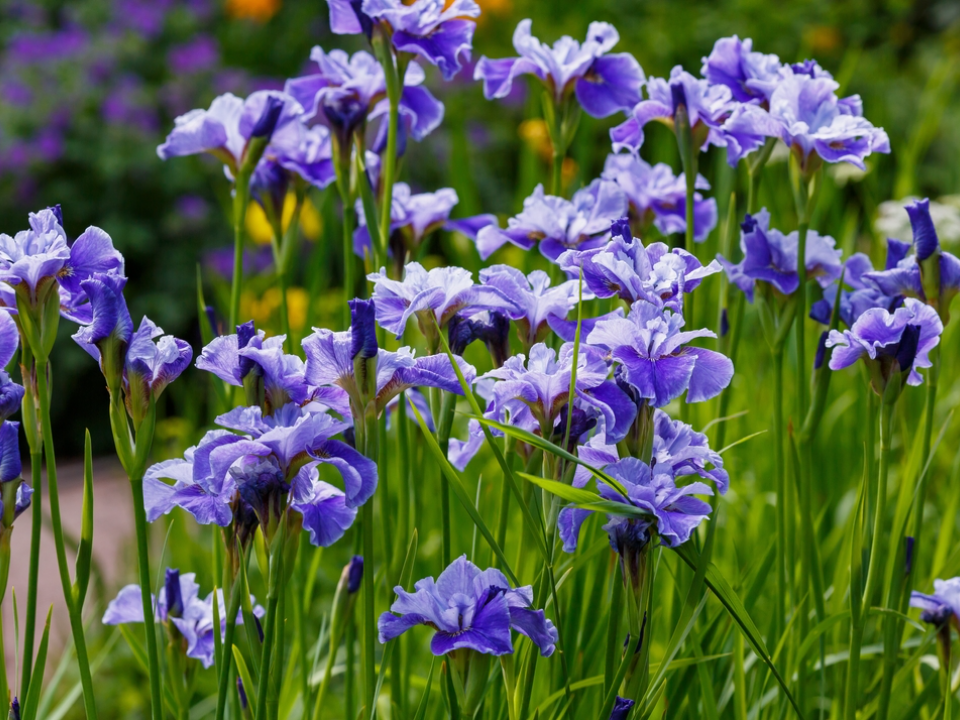
Irises offer a wide range of blue shades, from pale lavender to deep, almost indigo hues. These elegant flowers thrive in full sun and well-drained soil, making them ideal for flower beds or as part of a border planting.
Their tall, striking blooms are a beautiful addition to any garden, and they bloom in late spring or early summer. Irises attract butterflies and make for excellent cut flowers, adding beauty to both your garden and home.
Scilla
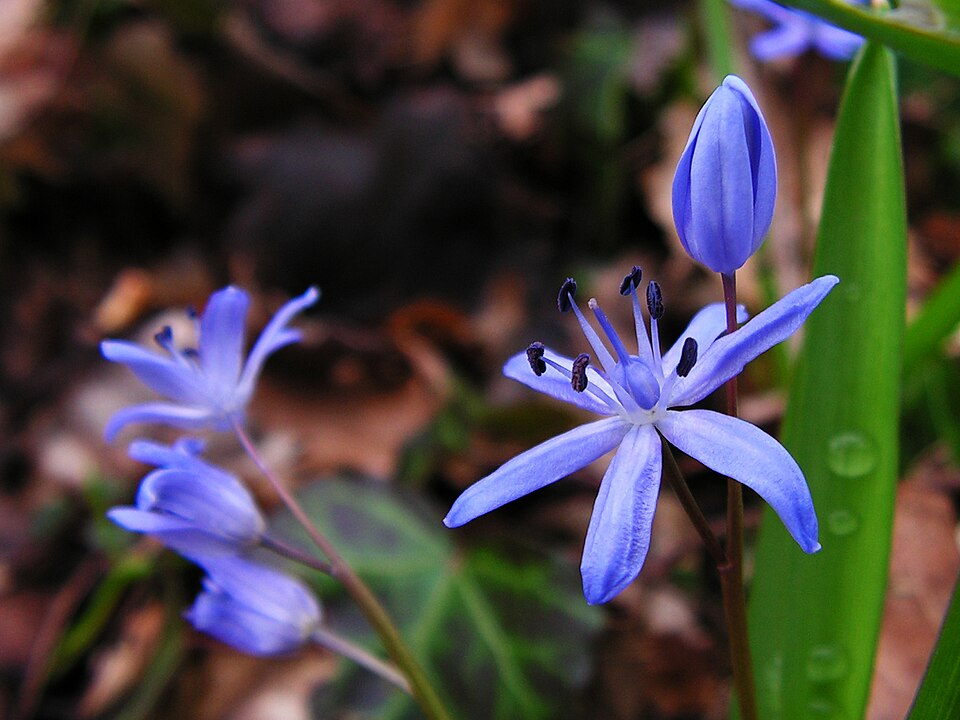
Scillas are early spring bloomers that produce clusters of blue flowers, making them perfect for filling in the gaps of your garden. These plants are well-suited to shaded or partially shaded areas, making them ideal for woodland gardens or flower beds with minimal sunlight.
Their bright blue flowers add a cheerful touch to the landscape when the rest of the garden is just waking up. Scillas are also great for naturalizing and can form beautiful, low-maintenance drifts of color.
Spiderwort
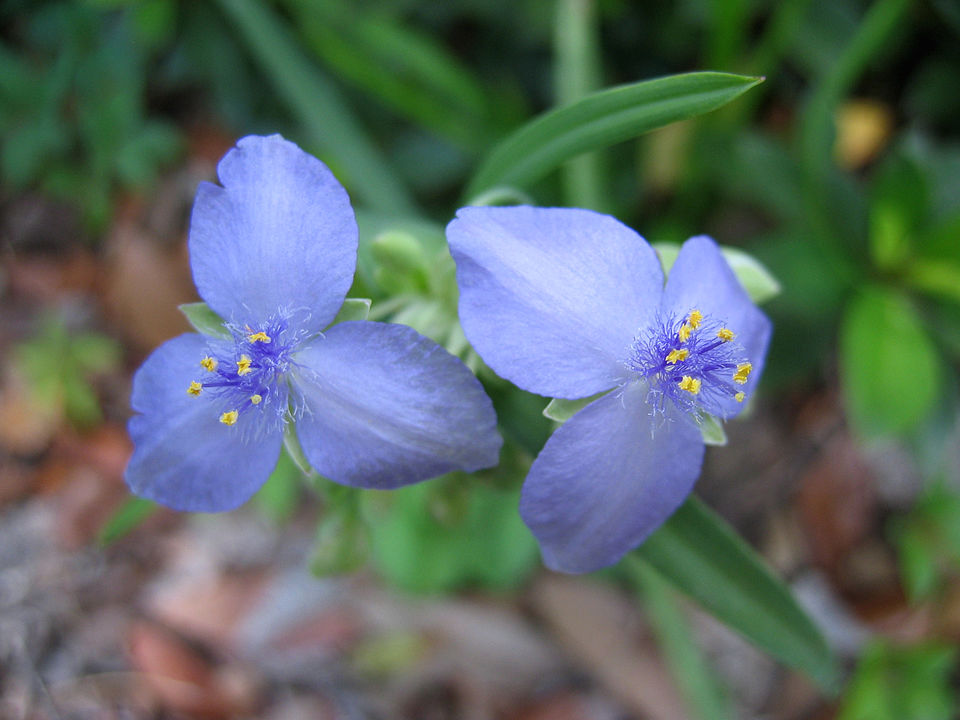
Spiderworts are hardy, perennial plants that produce small clusters of blue, purple, or pink flowers on tall stems. They thrive in moist, well-drained soil and full sun to partial shade, making them adaptable to different garden conditions.
The blue flowers of the spiderwort open in the morning and close by afternoon, adding an interesting dynamic to the garden. These plants are great for adding texture and color to perennial borders or wildflower gardens.
Clitoria Ternatea
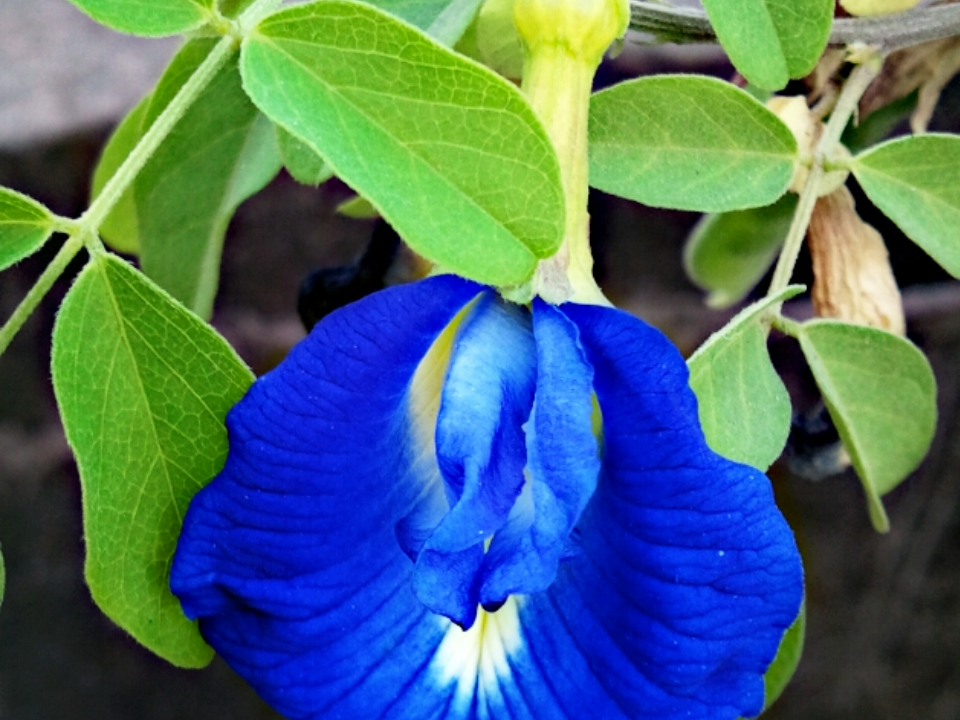
Clitoria Ternatea, also known as Butterfly Pea, produces striking blue flowers that resemble butterflies in flight. This tropical plant thrives in full sun and well-drained soil, making it perfect for trellises or fences.
The blue flowers are not only beautiful but also have culinary and medicinal uses. Butterfly Pea is a unique addition to the garden, with its eye-catching color and usefulness in both ornamental and practical applications.
This article originally appeared on Avocadu.
